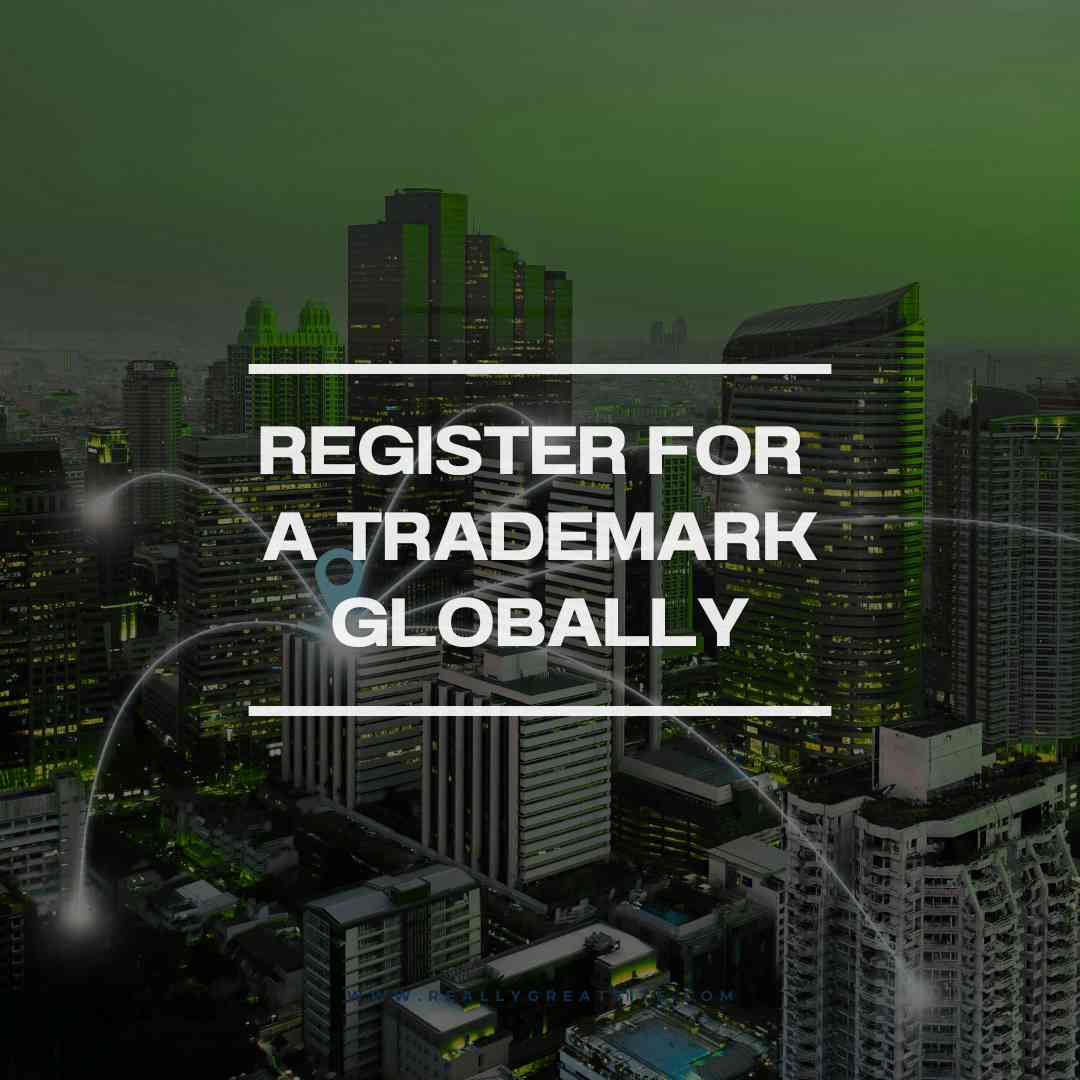

Expanding your business across borders is an exciting opportunity but protecting your brand internationally is just as crucial as growing it. Understanding how to register for a trademark internationally is key to ensuring your brand identity, logo, and name are legally protected in all the countries where you operate or plan to do business.
In this article, we’ll break down the steps, strategies, and legal tools you need to protect your trademark worldwide.
Registering your trademark in your home country does not automatically protect it in other countries. If you plan to sell products, offer services, or establish a presence abroad, you need to register your trademark in each jurisdiction where protection is required.
Without international trademark protection, you risk:
Knowing how to register for a trademark internationally helps prevent these issues and secures your intellectual property globally.
Before you proceed to register for a trademark internationally, the first and most crucial step is conducting a global trademark search. This ensures that your brand name, logo, or slogan is not already registered or in use by another entity in the countries where you plan to operate.
A comprehensive global trademark search helps you:
This process involves checking both international and national trademark databases to identify any trademarks that are identical or confusingly similar to yours.
Your trademark attorney will typically conduct a search using the following key databases:
In addition to these databases, your attorney may also conduct:
By conducting a thorough global trademark search, you significantly reduce the risk of rejection or opposition when you register for a trademark internationally, and you build a stronger foundation for your global brand protection strategy.
Once you’ve completed a global trademark search and confirmed that your brand is available, the next step in the process to register for a trademark internationally is selecting the appropriate filing route. The path you choose depends on the countries where you seek protection and the legal systems involved.
There are two main options for international trademark registration:
The Madrid System, administered by the World Intellectual Property Organization (WIPO), offers a centralized and cost-effective solution to register for a trademark internationally in multiple countries with a single application.
As of now, the Madrid Protocol includes over 130 member countries, making it an ideal choice for businesses planning to expand into several jurisdictions.
Important Note: To file under the Madrid System, you must have an existing trademark application or registration in your home country, which acts as the “basic mark.”
If your target country is not a member of the Madrid Protocol, or if you prefer to deal directly with local intellectual property offices, you may choose to file national or regional applications.
This approach requires submitting individual trademark applications to the IP office of each specific country or region where protection is sought.
This route is commonly used for:
Examples of countries where national filings may still be preferred or required:
The best route to register for a trademark internationally depends on your business goals, budget, and the countries where you intend to operate. Many businesses use a combination of both methods filing through the Madrid System for broad international coverage while pursuing national filings in countries outside the protocol.
Working with an experienced trademark attorney can help you evaluate your options and build a customized strategy for international trademark protection that aligns with your expansion plans.
After choosing the right filing route either through the Madrid System or via national trademark offices the next critical step to register for a trademark internationally is filing your application.
This stage formalizes your intent to secure exclusive rights to your brand in international markets and begins the legal process of obtaining protection across borders.
If you’re using the Madrid System to register for a trademark internationally, you must first have a registered trademark or a pending application in your home country. This is known as the basic mark. The basic mark serves as the foundation for your international application.
Here’s how it works:
Each designated country will assess the application based on its own criteria. If no objections are raised, your trademark is granted protection in that jurisdiction.
For countries not covered by the Madrid Protocol or where direct filing is strategically preferred, you’ll need to submit national or regional trademark applications. This process typically requires the support of a local trademark attorney familiar with the specific country’s regulations.
Here’s what the national filing process generally involves:
After you file to register for a trademark internationally, each country (whether via the Madrid System or national filing) will examine your application independently. They may:
Responding to these actions promptly often through your attorney is essential to avoid delays or loss of rights.
Filing is only one part of the international trademark journey. Ongoing monitoring, renewals, and enforcement are also vital to maintain your rights worldwide.
Once you file your application to register for a trademark internationally, the process doesn’t end there. Each country where you’ve applied will conduct its own substantive examination based on its local laws and regulations. While some jurisdictions may approve your trademark without any issues, others may raise formal objections or issue what is known as an office action.
Effectively managing and responding to these office actions is a critical part of the international trademark registration process and can significantly impact the success of your brand protection strategy.
Trademark offices in different countries may object to your application for a variety of reasons, including:
Responding to office actions is a legal and strategic process. Your trademark attorney plays a vital role in:
When you register for a trademark internationally, each objection must be handled diligently and within a strict deadline often between 30 to 90 days depending on the country. Failing to respond in time or providing an inadequate reply can result in rejection of your application and loss of rights in that jurisdiction.
Even if an objection arises in only one country, it won’t affect the status of your trademark in other countries under the Madrid System. However, resolving such issues promptly is essential to ensure consistent brand protection across all markets.
Responding to office actions is where the value of an experienced trademark attorney truly shines. By working with legal professionals who understand international trademark law, you can navigate objections effectively and strengthen your global brand protection.
Successfully completing the application and registration process is a major achievement but maintaining your trademark rights is equally important. After you register for a trademark internationally, ongoing maintenance, monitoring, and renewal are essential to keep your brand legally protected in the countries where you operate.
Most international trademarks require renewal every 10 years, although the exact timeline may vary depending on the country or jurisdiction. Missing a renewal deadline can result in the cancellation or expiration of your trademark, which means losing your exclusive rights and having to reapply from scratch.
To stay protected:
For trademarks filed under the Madrid System, renewals can be centrally managed through the World Intellectual Property Organization (WIPO), making the process more streamlined. However, for national filings, renewals must be handled separately with each country’s trademark office, often with the assistance of local attorneys.
Maintaining a trademark also means actively monitoring the marketplace for any unauthorized use or infringement of your brand. Even after you register for a trademark internationally, enforcement is your responsibility.
Key actions include:
Failing to enforce your trademark rights can weaken your brand’s legal standing and even risk losing protection due to inactivity or dilution.
In many jurisdictions, a trademark must be actively used in commerce to remain valid. If your trademark is not used for a continuous period (typically 3–5 years), it may become vulnerable to cancellation for non-use.
To avoid this:
Understanding how to register for a trademark internationally is only part of the journey. Maintaining and enforcing those rights across multiple jurisdictions, legal systems, and languages is an ongoing challenge.
Working with an experienced trademark attorney provides critical advantages:
In addition After you register for a trademark internationally, staying proactive about renewals, usage, and enforcement is the key to protecting your brand’s identity and value on a global scale. With professional legal support, you can confidently manage your international trademarks and focus on growing your business across borders.
Furthermore understanding how to register for a trademark internationally is essential for businesses looking to expand and protect their brand on a global scale. By conducting thorough research, choosing the right filing strategy, and working with qualified legal professionals, you can safeguard your brand’s identity wherever you go.
Preparing to take your brand global? Ensure your intellectual property is protected across borders by starting your international trademark registration journey with the support of experienced legal professionals. With expert guidance, you can navigate complex international laws, avoid costly mistakes, and secure your brand’s identity worldwide.
“Ahmed Ali Dewan & Co. is a trusted law firm specializing in intellectual property, criminal law, family law, and corporate law. We provide expert legal services tailored to your needs, offering professional guidance in complex legal matters. Contact us today”